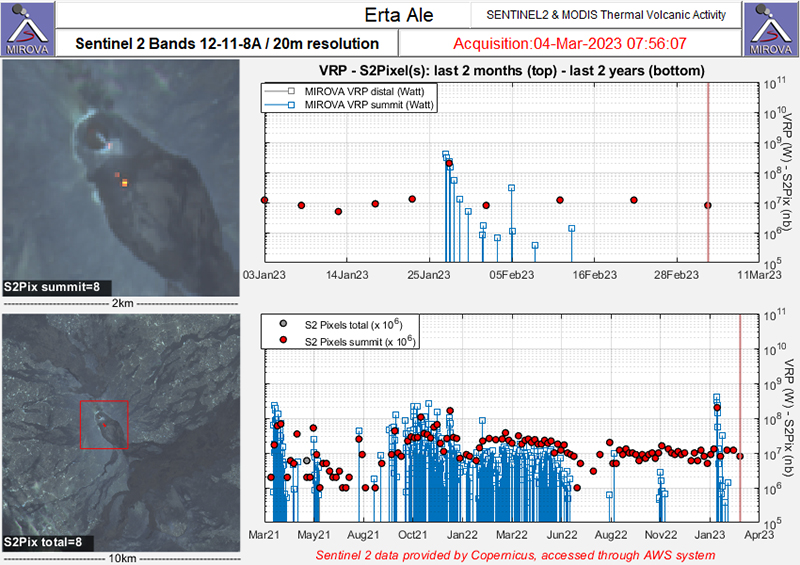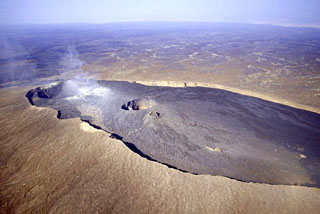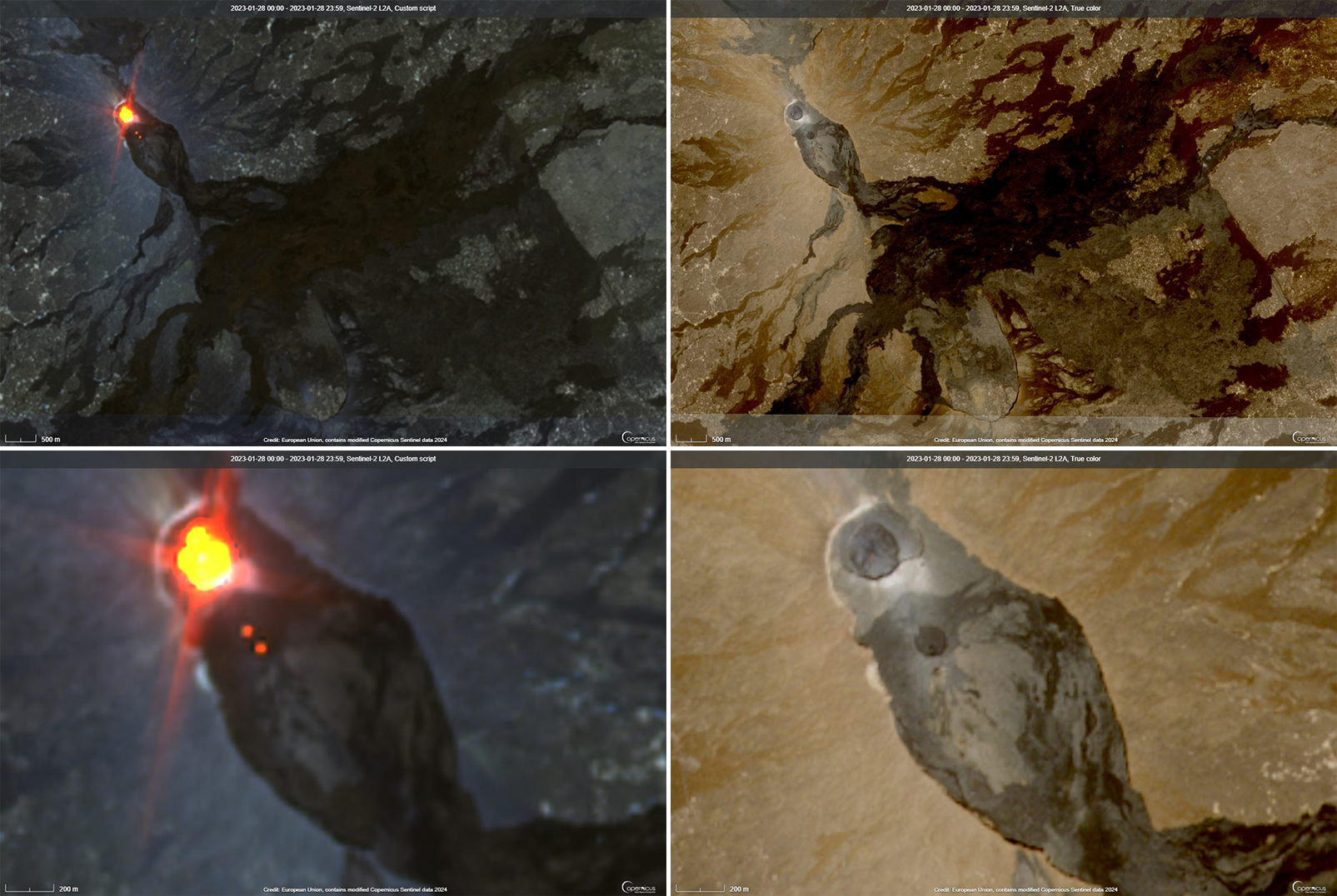Report on Erta Ale (Ethiopia) — June 2023
Bulletin of the Global Volcanism Network, vol. 48, no. 6 (June 2023)
Managing Editor: Edward Venzke.
Research and preparation by Paul Berger.
Erta Ale (Ethiopia) Ongoing minor activity at S crater, and a renewed lava lake at the N crater in January 2023
Please cite this report as:
Global Volcanism Program, 2023. Report on Erta Ale (Ethiopia) (Venzke, E., ed.). Bulletin of the Global Volcanism Network, 48:6. Smithsonian Institution.
Erta Ale
Ethiopia
13.601°N, 40.666°E; summit elev. 585 m
All times are local (unless otherwise noted)
Ethiopia's Erta Ale shield volcano, located in a desolate desert region with intense heat, has a caldera that consists of at least two pit craters (North and South), formed by the collapse of the surface lying above an empty space. Each pit crater harbors an active lava lake. During October 2021-November 2022, thermal anomalies at the S crater were almost persistent, while activity in the N crater was more intermittent (BGVN 47:12). This report covers December 2022-May 2023, during which time similar activity occurred. Information is based on satellite infrared data and several onsite visits.
Geologist and local guide Enku Mulugeta visited the volcano in late December 2022 and observed that vigorous lava spattering continued to build a steep-sided spatter cone (hornito), about 10 m high, within the S pit crater. Persistent glowing reflected off a steam plume accompanied this activity.
During a visit on 27 January 2023 Mulugeta reported that after 50 years of calm in the N crater, a new lava lake had begun to form. Slabs of dark, solidified crust on the lava lake surface continued to shift, accompanied by the typical bright orange lava glow between the slabs. He observed that the full-scale effusive eruption had covered an estimated 350 m in diameter to a depth of about 15 m. In addition, he observed that the hornito in the S crater continued to grow.
Mulugeta visited again on 29-31 March 2023 and noted that activity in the S crater continued, with a persistent lava lake whose surface level was about 5 m from the crater rim. Lava spattering continued to build the hornito, reaching “dozens of meters high”. He also observed that two large hornitos were building within the N crater.
Sentinel-2 images of Erta Ale during December 2022-May 2023 show that the heat signal from the N and S pit craters varied in intensity. Two bright hotspots in the S crater persisted throughout most of the reporting period, although they faded in mid-May. In the N pit, hotspots were either not visible or marginally visible during December through mid-January when one hotspot brightened and became intense and extensive on 28 January (figure 118). Thereafter, two hotspots were mostly visible with variable intensities.
Infrared data from both Sentinel-2 and MODIS, as shown graphically by the MIROVA system (figure 119), recorded ongoing crater heat following the stronger lava lake that ended in June 2022. Short pulses of stronger activity were detected in MODIS infrared data in late July-early August 2022, late October-early November 2022 (see BGVN 47:12), and late January-early February 2023.
 |
Figure 119. Graph of Sentinel-2 (red dots) and MODIS (blue bars) thermal anomalies at Erta Ale for the 2-year period ending 4 March 2023. Courtesy of MIROVA. |
Geological Summary. The Erta Ale basaltic shield volcano in Ethiopia has a 50-km-wide edifice that rises more than 600 m from below sea level in the Danakil depression. The volcano includes a 0.7 x 1.6 km summit crater hosting steep-sided pit craters. Another larger 1.8 x 3.1 km wide depression elongated parallel to the trend of the Erta Ale range is located SE of the summit and is bounded by curvilinear fault scarps on the SE side. Basaltic lava flows from these fissures have poured into the caldera and locally overflowed its rim. The summit caldera usually also holds at least one long-term lava lake that has been active since at least 1967, and possibly since 1906. Recent fissure eruptions have occurred on the N flank.
Information Contacts: MIROVA (Middle InfraRed Observation of Volcanic Activity), a collaborative project between the Universities of Turin and Florence (Italy) supported by the Centre for Volcanic Risk of the Italian Civil Protection Department (URL: http://www.mirovaweb.it/); Copernicus Browser, Copernicus Data Space Ecosystem, European Space Agency (URL: https://dataspace.copernicus.eu/browser/); Enku Mulugeta (URL: https://www.facebook.com/enku.mulugeta).


